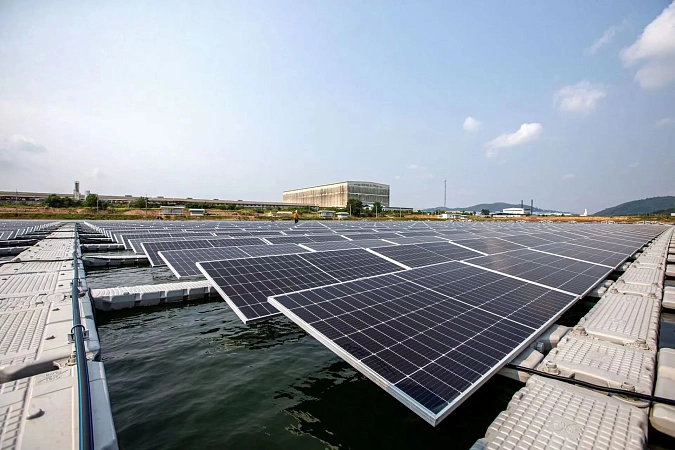China’s Belt and Road Initiative is an infrastructure programme worth billions: transport corridors and power plants for oil and gas are being built with money from Beijing. However, the focus is gradually shifting — away from gigantic construction projects by Chinese state-owned companies and towards investments in joint projects with BRI partner countries. The BRI is also set to become greener.
In his closing speech at the recently organised BRI Forum, President Xi Jinping named «green development» as one of eight areas of cooperation. Vice President Han Zheng announced that China would strengthen financing for environmentally friendly development and encourage companies to carry out more low-emission projects in partner countries.
The member states are increasingly demanding this. Their populations are increasingly resisting dirty BRI projects. So on the one hand, it is about making the projects cleaner. On the other hand, it is about promoting the energy transition in the partner countries that want to benefit from China’s climate technology.
Plans for green BRI since 2019
Back in 2019, the Chinese Ministry of Environmental Protection, together with more than 40 international partners — companies, associations, think tanks and NGOs — founded the BRI International Green Development Coalition (BRIGC), which is committed to environmental protection and low-carbon development within the framework of the BRI. Since then, the BRIGC has issued Green Development Guidance for BRI projects three times, which contains a «traffic light system»: red for projects with a significant environmental or climate impact, amber for those with a neutral impact. Green stands for a positive contribution.
The latest Green Development Guidance from October 2021 recommends that «financial institutions and companies are encouraged not to add new ‘red’ projects and to phase out existing commitments to ‘red’ projects». Shortly beforehand, Xi had pledged at the United Nations that China would no longer finance any new coal projects abroad.
Four ministries affirm the end of coal projects
In March 2023, four relevant ministries published a paper entitled «Opinions on the Joint Implementation of Green Development in the BRI», which was scrutinised by authors from the environmental organisation Client Earth. The paper affirms that no new coal-fired power plants will be built under the BRI and that «China will promote the full implementation of the ... Paris Agreement by all parties».
The paper also encourages participating companies to comply with international or Chinese environmental standards in BRI projects if such standards do not exist or are inadequate in recipient countries. This is particularly the case in poor or corrupt countries — and has often led to problems. The «opinions» also suggest that China could regulate the actions of its companies abroad in future instead of simply «encouraging» them as it has done in the past.
The Client Earth authors expect that industry associations in China will publish a kind of code of conduct for their respective sectors. The BRIGC, for example, recently published a guide for motorways and railway lines and a guide for companies and financial institutions.
The Asia Society has developed a digital toolkit for evaluating projects. This allows anyone to check that they are «beneficial, equitable, inclusive, environmentally and socially sustainable» for all stakeholders. According to the Asia Society, sometimes only small adjustments are needed to make projects more sustainable.
BRI energy projects: gradually moving away from fossil fuels
The trend away from fossil fuels is already recognisable. «China’s energy-related engagement in the first half of 2023 was the greenest in a 6-month period since the BRI was founded in 2013,» wrote green finance expert Christoph Nedopil Wang, now Director of the Australian Griffith Asia Institute, in July in a report for the Green Finance & Development Centre at Shanghai Fudan University. According to the report, China spent 12.3 billion dollars on energy projects between January and June 2023. Almost 56 per cent of this was spent on renewable energies — 41 per cent on solar and wind power plants and 14 per cent on hydropower plants.
In contrast, according to Nedopil, China is no longer building any new oil plants, even if there are still individual investments (see chart). As promised, coal projects are also practically at zero, as confirmed by other experts. However, there are individual exceptions because some projects stretch the rules. For example, a coal-fired power plant in Indonesia was approved as part of an industrial base. Another in Pakistan was not built until the first half of 2023, but was classified as «old» because it had already been under discussion since 2016. It is also unclear what will happen with coal projects that are already under construction or have just been completed.
Concrete green BRI projects are only just beginning
Generally speaking, it can be said that the actual greening of the BRI is only just beginning. Among the 450 or so papers, agreements and projects signed at the BRI Forum, there were also signatures in favour of renewable energy projects. Moritz Rudolf from the Paul Tsai China Center at Yale University in the US has noted a whole series of these in a four-part feed on the BRI Forum on X.
A few examples:
200 MW solar park with energy storage system in Tashkent/Uzbekistan 750 MW photovoltaic project in Iraq Smaller solar parks in Romania, Poland and Burkina Faso «Africa Solar Belt» programme for South-South cooperation on climate protection Two dam projects, one in Indonesia and one in Madagascar In addition, several multilateral agreements were signed for cooperation on green investments, climate adaptation or specific topics such as the protection of mangrove forests in the Asean states.
Photovoltaic and wind projects
Regardless of the plans at the BRI Forum, some projects are already underway. Together with China, Uzbekistan is building photovoltaic plants in the regions of Kashkadarya and Bukhara with a total capacity of 1,000 megawatts. At a summit with the five BRI partners of Central Asia in Xi’an in June, China signed contracts for the construction of large wind and solar plants in the region. A 600-megawatt solar park in Saudi Arabia, a solar park in South Africa and a wind farm in Namibia are also in the pipeline and under construction.




